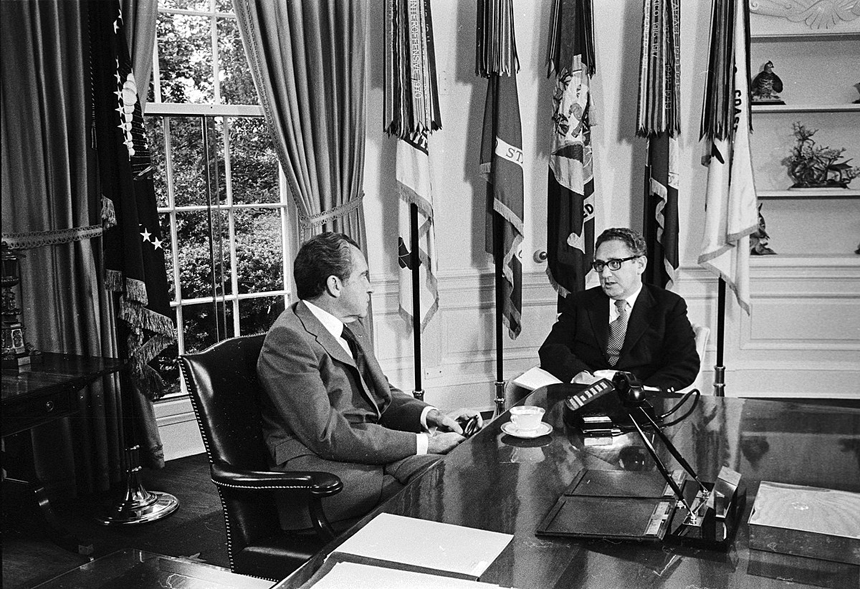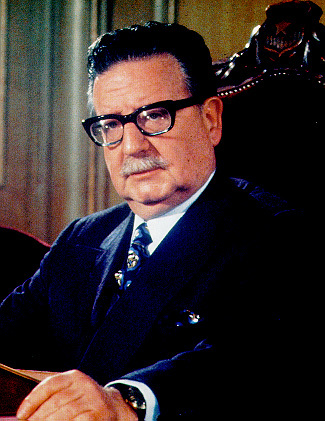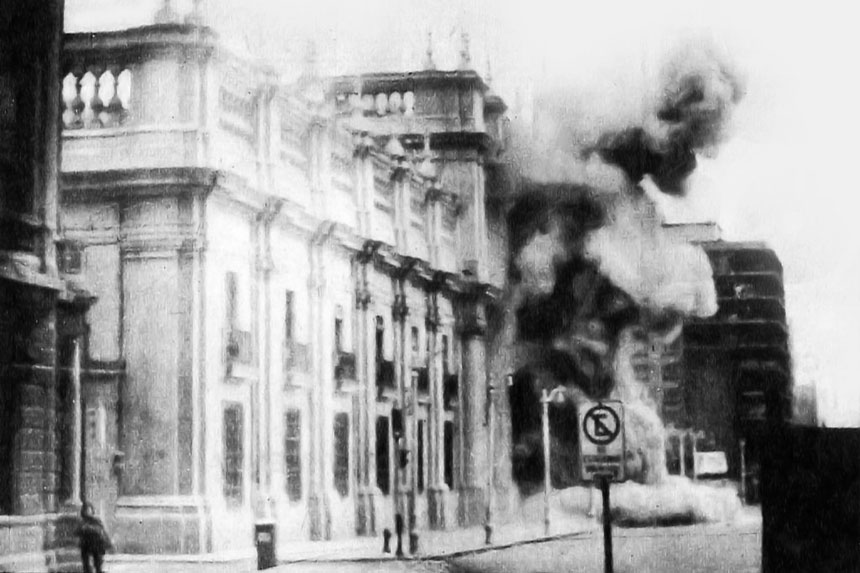Fifty years ago this week, President Richard Nixon named Henry Kissinger his new secretary of state, replacing William P. Rogers who had resigned on September 3 due to the ongoing Watergate scandal. Kissinger was already serving as Nixon’s national security advisor, which made him an unusual choice for this additional and crucial cabinet position. He was also already a very controversial figure on the global stage due to his prominent role in the Vietnam War, specifically the covert and illegal bombing campaigns against Cambodia that had been Kissinger’s brainchild. All those layers made Kissinger’s state appointment another lightning rod for a presidency that was and would remain quite stormy until its conclusion a year later.

In the two-and-a-half weeks between Rogers’ resignation and Kissinger’s appointment, another hugely important event unfolded on the world stage. That event, the September 11, 1973, coup d’état that deposed Chilean President Salvador Allende and replaced him with a brutal military junta, might seem far removed from the White House. Yet both Henry Kissinger and Richard Nixon were not only aware of but also intertwined with the coup, before, during, and after it took place. And that U.S. involvement reminds us of two of the most consistent elements of American foreign policy throughout the 20th century: supporting violent opposition to democratically elected governments and undermining the practice of democracy in the process.

The U.S. government had openly opposed and covertly sought to stop the election of Allende, a democratic socialist leader, in September 1970. As Senator Frank Church, chairman of the Church Committee, which investigated Nixon’s excesses, later put it, “Nixon said the choice of government by the Chileans was unacceptable to the president of the United States. The attitude in the White House seemed to be, ‘If in the wake of Vietnam I can no longer send in the Marines, then I will send in the CIA.’” Indeed, immediately after Allende’s election the CIA began plotting multiple ways of overthrowing his government, whether through a blatant coup or through other means of destabilizing the regime. And the Nixon administration was kept fully in the loop, as illustrated by Director of Central Intelligence William Colby’s 1973 memorandum to Kissinger noting, “Since Allende’s inauguration, U.S. policy has been to maintain maximum covert pressure to prevent the Allende regime’s consolidation.”
Those ongoing American efforts to undermine and destabilize the Allende regime undoubtedly set the stage for the September 1973 coup. More specifically, historian Peter Winn has uncovered evidence that the CIA was spreading false reports of a planned coup in the summer of 1973 in the hopes that they would prompt Chilean military leaders to take over the government first. When they did so, the U.S. government, and more exactly the Department of Defense’s Defense Intelligence Agency, also likely provided the missiles that the junta used to attack Allende’s presidential residence in Santiago, La Moneda Palace (a fact that was only made public when the documents were declassified by the Clinton administration in 2000). While the Nixon administration publicly denied any role in the coup, privately Kissinger wished that the U.S. could take credit, complaining in a recorded phone call with Nixon that “in the Eisenhower period, we would be heroes.” Nixon responded, “Well, we didn’t — as you know — our hand doesn’t show on this one.”
The U.S. hand in Chile might not have shown, but it remained heavy. In the immediate aftermath of the coup, while the new regime was in the midst of an extensive campaign of terror and violence against political adversaries of all types (by the end of which more than 130,000 had been arrested, many of them “disappeared” forever), junta leaders published a book, El Libro Blanco (The White Book), which made the case for the coup. It did so based on a very specific cause: Plan Zeta (Plan Z), a fraudulent “self-coup” by the Allende administration where they supposedly planned to kill top military leaders and which closely echoed the propaganda the CIA had been spreading. This was just one of many ways that the new regime remained closely tied to the United States. For example, when the junta’s leader, General Augusto Pinochet, became Chile’s military dictator, a number of his chief aides became paid contacts for both the CIA and U.S. military intelligence. One of them in particular, Manuel Contreras, was the head of Pinochet’s brutal intelligence service, DINA, which ran Operation Condor, a campaign of violence targeting not only Chilean dissidents but left-wing politicians around the globe, and throughout which Contreras remained a CIA asset.
This multifaceted U.S. involvement in the Chilean coup was typical throughout but also well beyond Latin America. In Latin America specifically, the U.S. created an entire institution to train those who would take part in such revolutions: the School of the Americas (originally known as the Latin American Ground School), founded by the U.S. Army in 1946 at Fort Amador in the Panama Canal Zone. A declassified list of graduates released in 1993 highlighted what historian Lesley Gill calls the numerous “dictators, death squad operatives, and assassins” who had trained at the school and who took part in many U.S.-supported revolutions, regime changes, and dictatorships across the second half of the 20th century.
The Chilean coup does not simply reflect such covert U.S. involvement in violent regime change and dictatorships, however, but also America’s far too consistent opposition to democracy around the world. Salvador Allende had been democratically elected, chosen to be president by a plurality of Chilean voters in a September 1970 election. Yet as Senator Church noted (and as declassified documents make clear), President Nixon deemed the results of that democratic election unacceptable and used American power to undermine them. As we continue to struggle to preserve democracy, democratic governance, and free and fair elections here in America — perhaps the first nation in the world to be founded on principles of democracy — we would do well to remember our fraught relationship to those ideals around the world, a relationship exemplified by Chile’s 9/11.
Become a Saturday Evening Post member and enjoy unlimited access. Subscribe now



